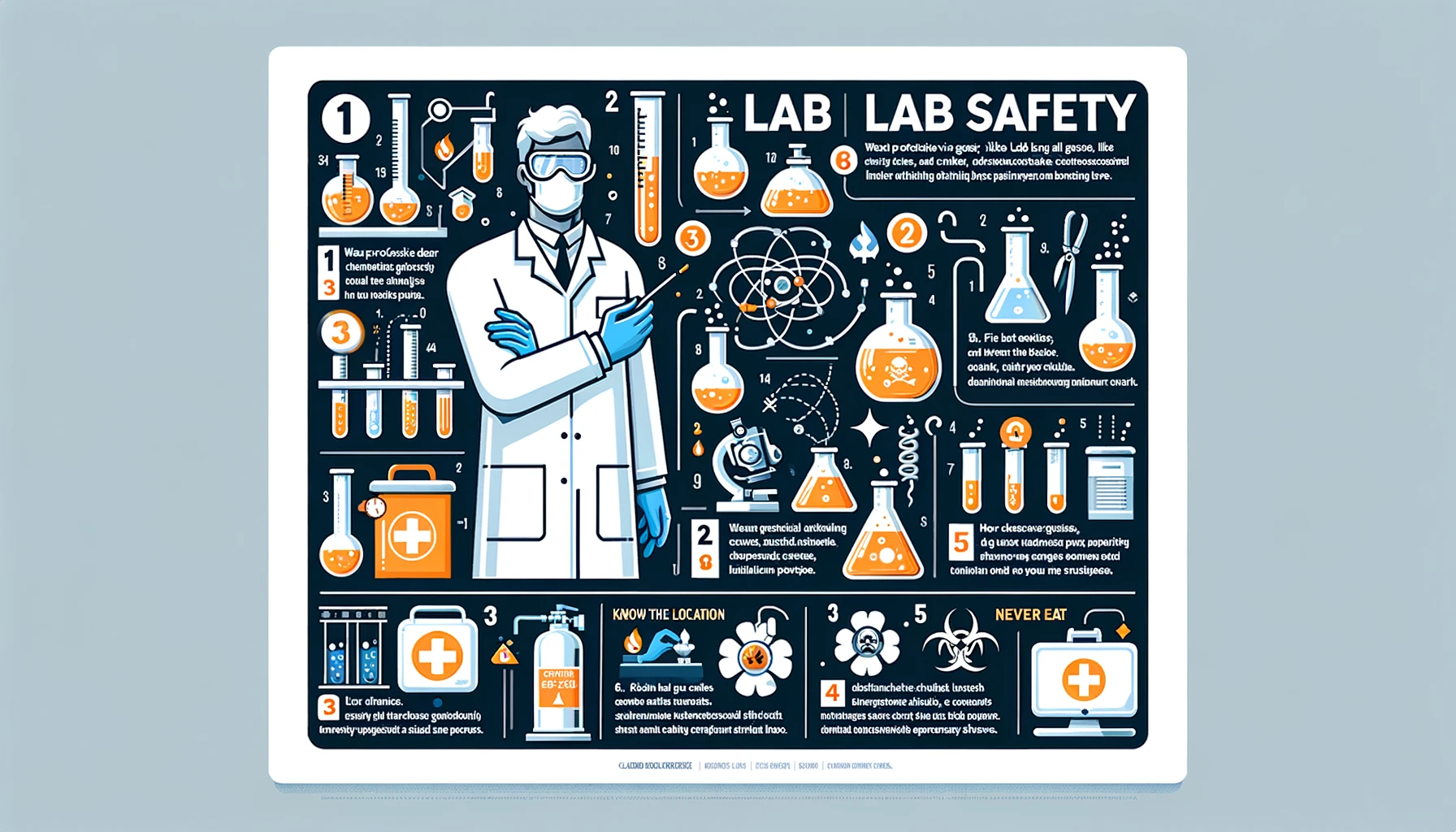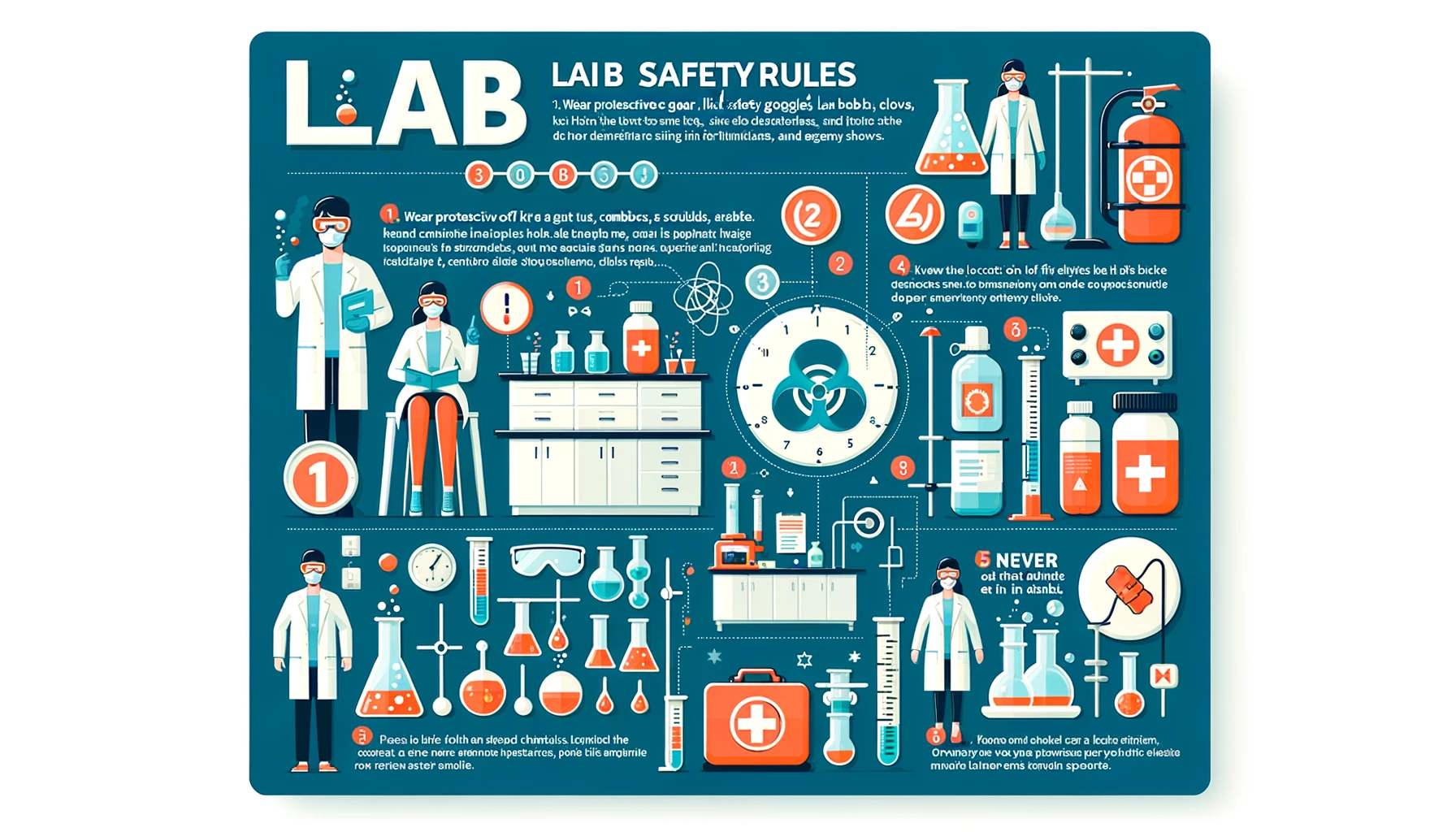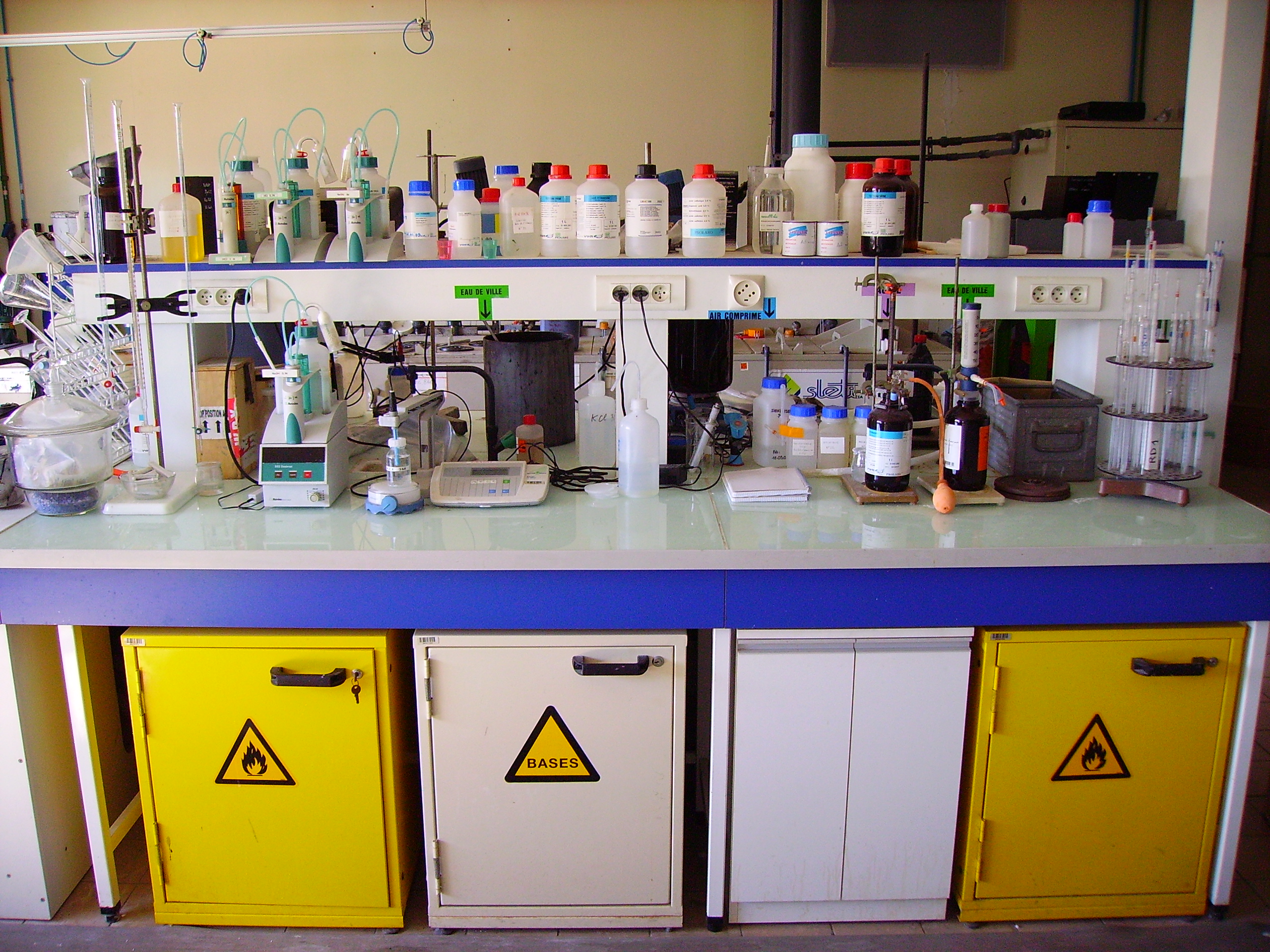Lab safety rules are very important for students, teachers and kids’ laboratory is like a growing organism where internal changes and re-arrangements keeps on changing but overall design and structure remains unchanged. In Science laboratory water is usually obtained from taps connected to water pipes or from aspirator.

Heat is obtained by burning:
- Gas from the mains
- Gas from portable tanks called bottled gas
- Solid chemical fuel Liquid fuel i.e. a spirit lamps
Electricity is obtained from:
- Dry cells
- Lead acid accumulators
- Direct from the mains
Management and Laboratory Organization
The science teacher has the great role of in science laboratory.it here means that the teacher should develop an interesting environment in which pupils can work ) initiative towards appropriate goals.
Good Knowledge about high school lab safety rules will help to ensure that the laboratory achieves its intended purposes to enhance and consolidate the theoretical science teaching in classrooms. If a science laboratory is poorly managed, it not only will fail to achieve its intended purposes but will probably affect the student’s’ interest and enthusiasm in learning science.
General Lab Safety Rules And Science Lab safety Worksheet You Must Know.

- Conduct yourself in a responsible manner at times in the laboratory.
- Be familiar with your lab assignment before y come to lab. Follow all written and verbal instructions carefully. If you do not understand direction or part of a procedure, ask the teacher before proceeding.
- Never work alone. No student may work in laboratory without an instructor present.
- When first entering a science room, do not touch any equipment, chemicals, or other materials in laboratory area until you are instructed to do so.
- Do not eat food, drink beverages, or chew gum ‘ the laboratory. Do not use laboratory glassware containers for food or beverages.
- Perform only those experiments authorized by instructor. Never do anything in the laboratory is not called for in the laboratory procedures or your instructor. Carefully follow all instructions both written and oral. Unauthorized experiment are prohibited.
- Safety goggles and aprons must be worn whenever you work in lab. Gloves should be worn whenever use chemicals that cause skin irritations or to handle hot equipment. Wear older clothes that over the maximum amount of skin.
- Observe good housekeeping practices. Work areas be kept clean and tidy at all times. Bring your laboratory instructions, worksheets, or reports to the work area. Other materials 5, purses, backpacks, etc.) should be stored in room area.
- Know the locations and operating procedures of all equipment including the first aid kit, eyelash i, safety shower, spill kit, fire extinguisher, rue blanket. Know where the fire alarm and exits are located.
- Be alert and proceed with caution at all times in the laboratory. Notify the instructor immediately of unsafe conditions you observe.
- Dispose of all chemical waste properly. Never mix chemicals in sink drains. Sinks are to be used only water and those solutions designated by the Instructor.
- Labels and equipment instructions must be read carefully before use. Setup and use the prescribed apparatus as directed in the laboratory instructions provided by your teacher.
- Keep hands away from your face, eyes, mouth, and while using chemicals. Wash your hands soap and water after performing all experiments. Clean (with detergent powder), rinse, and dry all work surfaces and equipment at the of the experiment.
- Experiments must be personally monitored at times. You will be assigned a laboratory station which to work. Do not wander around the r distract other students, or interfere with laboratory experiments of others.
- Students are never permitted in the science storage rooms or preparation areas unless given sp permission by their instructor.
- Know what to do if there is a fire drill during laboratory period; containers must be closed, valves turned off, fume hoods turned off, and electrical equipment turned off.
- If you spill acid or any other corrosive chemical you skin or clothes immediately wash area large amounts of water (remember that s amounts of water may be worse that no wat all). After this get the teacher’s attention. The kit will be used for spills on floor or countertop.
- At the end of the laboratory session see a) main gas outlet valve is shut off. The way turned off. desktop, floor area, and sink clean. All equipment is cool, clean, and arranged.
- Any time chemicals, heat, or glassware are students will wear laboratory goggles. There be no exceptions to this rule! Contact lenses sh not be worn in the laboratory unless you permission from your instructor.
- Dress properly during a laboratory activity. Long hair, dangling jewelry, and loose or baggy clothing are a hazard in the laboratory. Long hair must be tied back and dangling jewelry and loose or baggy clothing must be secured. Shoes must completely cover the foot. No sandals are allowed.
In conclusion, lab safety is of utmost importance for students, kids, and teachers involved in scientific experiments and laboratory work. By following the necessary safety rules and guidelines, we can create a safe and productive learning environment in the laboratory. Remember to always wear protective gear, handle chemicals with caution, and keep workspaces clean and organized.
